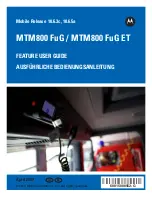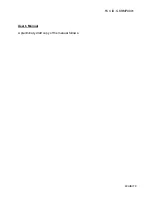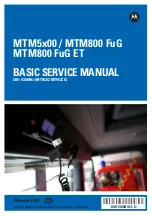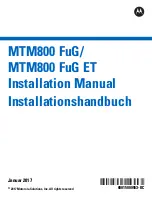
XG100WM User Manual
10-1
Janam Technologies LLC
10
Regulatory and Maintenance
Regulatory and Safety Approvals
The CE mark on the product indicates that the system has been tested to and conforms with the
provisions noted within the 2004/108/EC Electromagnetic Compatibility Directive.
For further information, please contact: Janam Technologies; 100 Crossways Park West, Suite 105,
Woodbury, NY 11797.
Janam Technologies shall not be liable for use of our product with equipment (i.e., power supplies,
personal computers, etc.) that is not CE marked and does not comply with the Low Voltage Directive.
FCC and Canadian Compliance
XG Series mobile computers meet or exceed all applicable standards and have been manufactured to the
highest level of quality. To see the specific labels associated with RF terminals configurations, visit
www.janam.com. Warning: Changes or modifications to this unit not expressly approved by the party
responsible for compliance could void the user authority to operate the equipment.
XG Series RF Terminals with 802.11b/g and Bluetooth
RF, regulatory and safety approvals
Parameter Specification
RF approvals
U.S.A.
FCC Part 15 Subpart C
Canada
RSS-210 issue 7:2007 annex 8
European
Community
EN 300 328 v1.7.1:2006
Australia AS/NZS
4268:2003+A1 :2005+A2 :2006
This device complies with Part 15 of the FCC Rules. Operation is subject to the following two conditions:
(1) this device may not cause harmful interference; and (2) this device must accept any interference
received, including interference that may cause undesired operation.
This equipment has been tested and found to comply with the limits for a Class B digital device, pursuant
to Part 15 of the FCC Rules. These limits are designed to provide reasonable protection against harmful
interference in a residential installation. This equipment generates, uses and can radiate radio frequency
energy and, if not installed and used in accordance with the instructions, may cause harmful interference
to radio communications.
However, there is no guarantee that interference will not occur in a particular installation. If this
equipment does cause harmful interference to radio or television reception, which can be determined by
turning the equipment off and on, the user is encouraged to try to correct the interference by one or more
of the following measures:
•
Reorient or relocate the receiving antenna.
• Increase the separation between the equipment and receiver.
• Connect the equipment to an outlet on a circuit different from that to which the receiver is connected.
• Consult the dealer or an experienced radio/TV technician for help.
If necessary, the user should consult the dealer or an experienced radio/television technician for additional
suggestions. The user may find the following booklet helpful: “Something about Interference.” This is




































